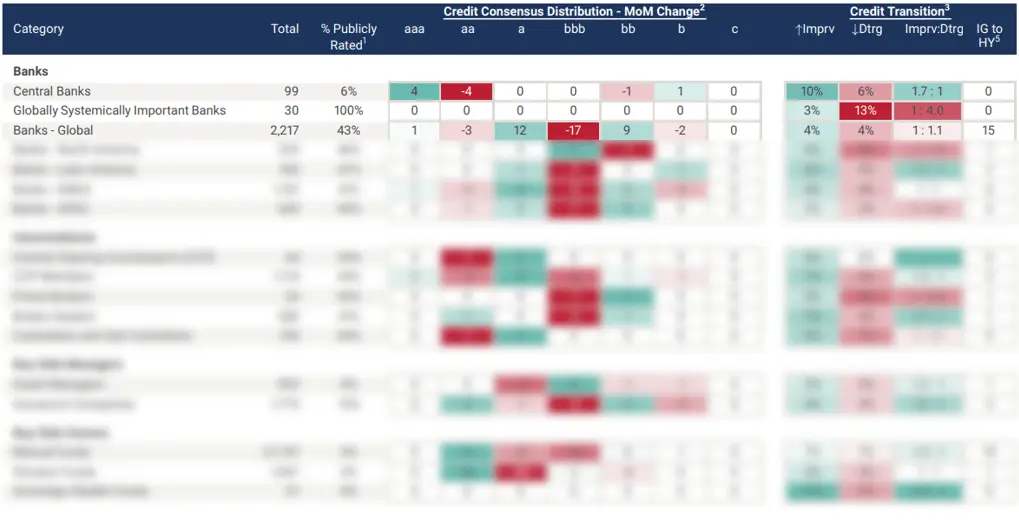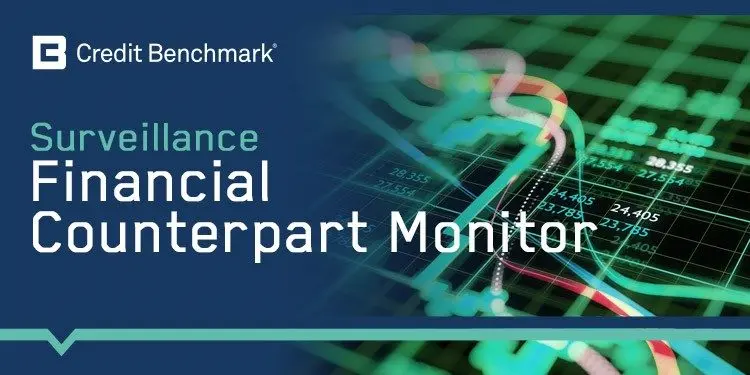Download the latest Financial Counterpart Monitor below.
The Financial Counterpart Monitor from Credit Benchmark provides a unique analysis of the changing creditworthiness of financial institutions.
Credit Benchmark covers 10,940 Financial entities, 82% of which are not rated by a credit rating agency. Financials showed very slight improvement this month, tipping the balance from last month’s next deterioration to a neutral credit reading.
Banks
GSIBs (of which we cover all 30 entities) were the group showing the strongest incidence of net credit deterioration this month, with a negative ratio of 1 improvement to every 4 deteriorations. North American Banks (293 entities covered, 54% unrated) followed this trend, with a negative ratio of 1:1.9. The groups with the strongest credit showing this month were Central Banks (99 entities, 94% unrated) and Latin American Banks (190 entities, 53% unrated), both with positive ratios of 1.7:1 improvements to deteriorations.
Intermediaries
Of the Intermediaries, Central Counterparties (44 entities, 76% unrated) showed only credit improvement this month, with no instances of deterioration. Broker Dealers (280 entities, 59% unrated) were net positive, with an improvements to deteriorations ratio of 1.7:1. On the other hand, Prime Brokers (24 entities, 8% unrated) skewed negative with a ratio of 1:2.
Buy Side
Buy Side firms remained positive on the whole this month. Sovereign Wealth Funds (37 entities, 92% unrated) showed the highest positive ratio, with 2 improvements to each deterioration. Insurance Companies (1,773 entities, 85% unrated) followed, with a positive ratio of 1.6:1. Pension Funds (1,967 entities, 100% unrated) were comparatively the poorest performer, but managed to remain credit neutral with a ratio of 1:1.

The Financial Counterpart Monitor from Credit Benchmark provides a unique analysis of the changing creditworthiness of financial institutions. The report, which covers banks, intermediaries, buy-side managers, and buy-side owners, summarizes the changes in credit consensus of each group as well as their current credit distribution and count of entities that have migrated from Investment Grade to High Yield.
The data, which is based on the credit risk views of Credit Benchmark’s contributing financial institutions, is also available at the legal entity level. Users of the data can monitor and be alerted to the changing credit consensus of their financial counterparts.
